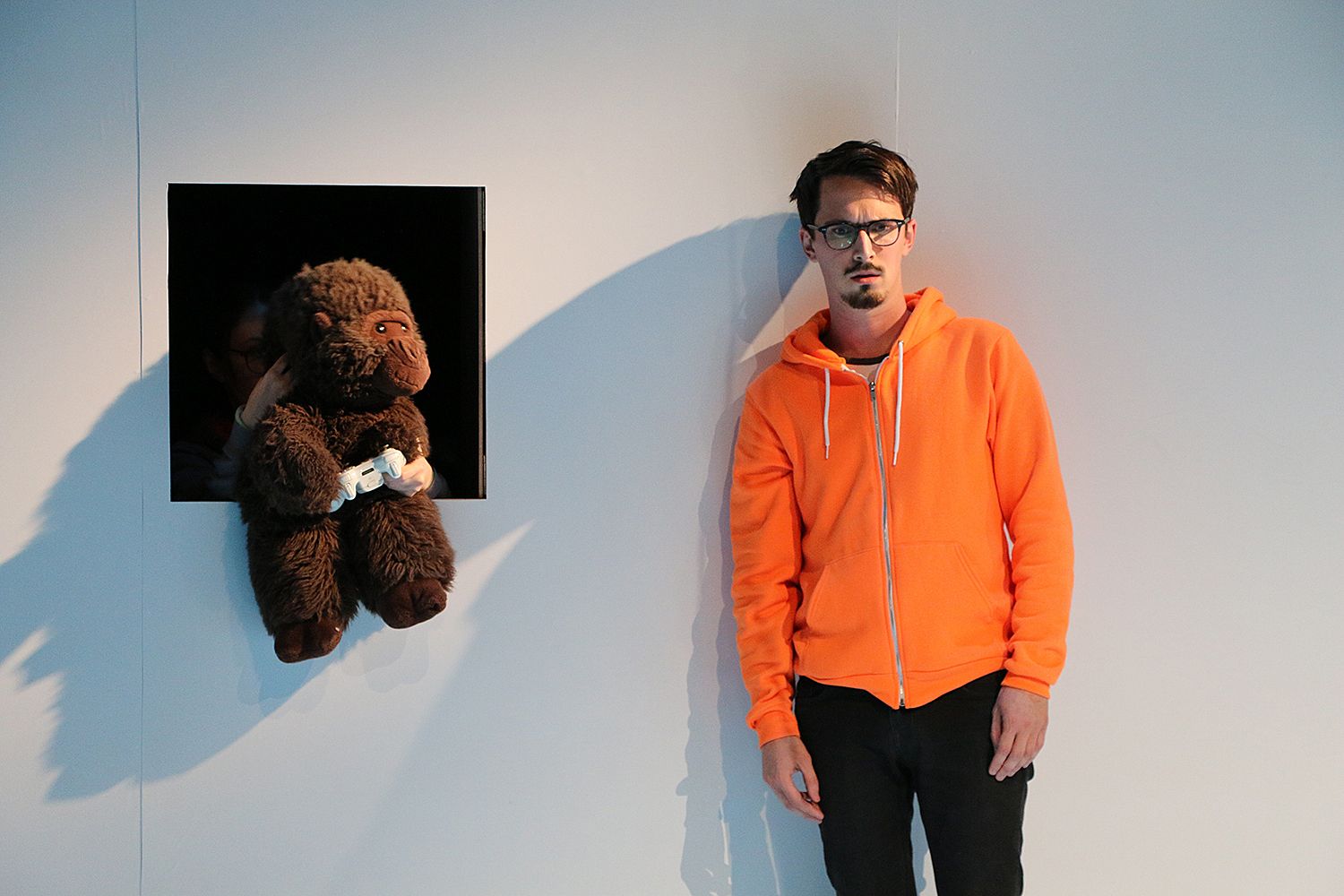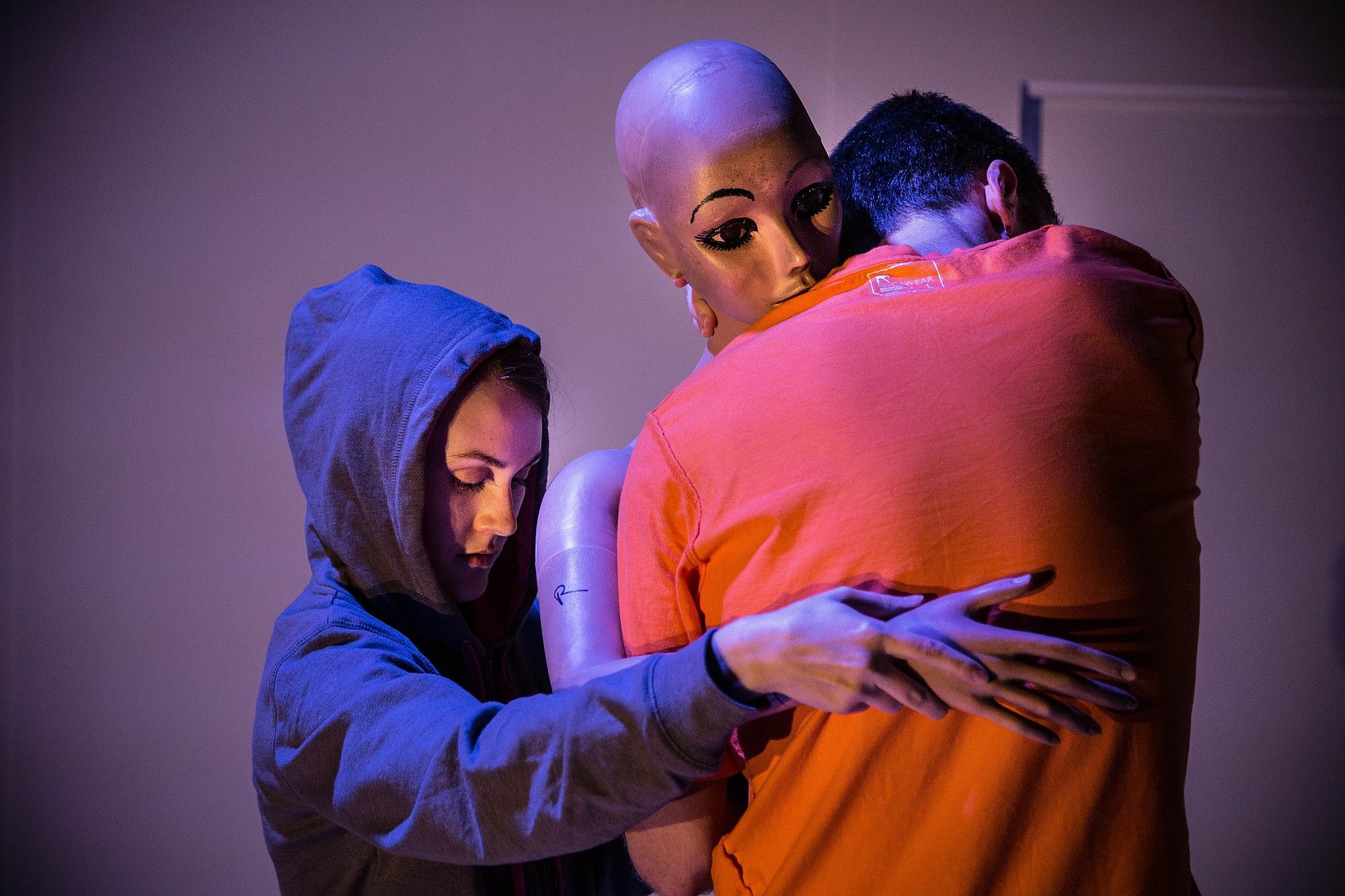It’s in the Bag: A Review of 'All Your Wants and Needs Fulfilled Forever'
Francis McWhannell with a two-part review of Playground Collective's 'All Your Wants and Needs Fulfilled Forever'.
Francis McWhannell with a two-part review of Playground Collective’s All Your Wants and Needs Fulfilled Forever.
Part One
The part for people who have not yet seen All Your Wants and Needs Fulfilled Forever, in which I tell you that it’s worth seeing, without giving away too much of the game.
For the last few days I’ve been going round telling people that they should go see All Your Wants and Needs Fulfilled Forever. (I think I’ve finally internalised that title. I’m quite proud of that.) When they inevitably ask me why, I come a bit unstuck. Because it’s good; because it’s very good. This sort of response is never enough. People want to know what specifically is good about it. They want details. The problem is, I’m opinionated, indiscreet. In short, I spoil. Which means, of course, that I’m no good at reviewing art that depends on an element of surprise. And this play does. After much thought, and quite a few drafts (today is day four trying to write the review), I’ve decided that this is my solution: a clunky two-parter.
I think I can safely provide the following information to anyone who hasn’t yet seen All Your Wants. (You might just want to go see the play now. Then you can skip all this and head to Part Two, which is probably more interesting, and definitely meatier.) Most of this stuff you could get pretty easily online if you cared to investigate. Don’t investigate, though; there are some spoiler-ish things out there. The third Q Presents play for 2015, All Your Wants has been produced by the PlayGround Collective, a New Zealand theatre company founded by Robin Kerr, Eli Kent, and Eleanor Bishop in 2007, and known for its innovative/experimental shows (including Like There’s No Tomorrow, co-pro’d with ATC, and The Intricate Art of Actually Caring), which do well with critics – the company has won nine Chapman Tripp Theatre Awards – and audiences alike.
All Your Wants continues the Collective’s proud tradition, being ingeniously conceived, spectacularly presented, and absolutely gripping. Its primary writer is the precociously talented Kent (Rubber Turkey, Black Confetti, this piece), who has built the show with the assistance of various other people, including Kerr, who directs it, and Joel Baxendale, Victoria Abbott, and Hamish Parkinson, who perform in it. The play has been retooled several times, and this is its third staging. It was first presented at BATS Theatre in Wellington last year, and it enjoyed a two-day outing at La MaMa in New York earlier this year.
On a basic level, All Your Wants is about a young dude named Simon, last name also Simon, who is played by Kent. Simon’s father has recently died of Motor Neuron Disease, and Simon is coping, or struggling to cope, while keeping an eye on his widowed mother, and trying to decide whether to move to Australia with his girlfriend. Simon tends to his pet rats, he goes for long runs, he drinks smoothies, he hangs out with his stoner buddy, he watches stuff. Simon contemplates the Hero’s Journey narrative template developed by Joseph Campbell, as you do. That’s about all I can reasonably reveal. That, and a talking lightbulb figures prominently in the play, as does a mystery box that promises to change Simon’s life. Let’s call these teasers.
And now we’re back where we started. With me telling you that you should go see All Your Wants. Go because the play is accomplished and intelligent. It’s complex, without being too convoluted. It’s funny, without being too absurd. It’s moving, without being too sentimental. Are you going yet? Go. Go because the actors are superb. Go because you’ll find they do more than just act. Go because the set, sound, and staging are sophisticated and full of delightful surprises. Go because you won’t come away from the experience feeling cold. This is no ordinary night at the theatre. This is theatre of the extraordinary.
Part Two
The part for people who have already seen All Your Wants, in which I discuss some, and only some, of my thoughts on the play, hopefully without being too insistent.
[Note: the play is about a lightbulb.]
So, now you’ve seen All Your Wants, right? If you haven’t, stop reading. Go see it. I’m not kidding. I’m about to spoil all your fun if you haven’t seen it yet. Don’t do this to yourself. Don’t let me do this to you. Now that we’re on the same page, let’s go back to the talking lightbulb, because that lightbulb is pretty much central to the play, that lightbulb is what the play is all about. It has to be. Well, what’s the deal with the lightbulb? Let’s say, for argument’s sake, that the lightbulb is director/producer of the play-within-a-play that is Simon-the-hero’s journey. He – his computerised voice is male – is not, per se, in control of Simon. Simon is presented as a real person, and it’s his real story we’re seeing. The lightbulb is akin to that guy played by Ed Harris in The Truman Show. It’s no accident that Simon’s girlfriend is trying out for a part in a TV adaptation of the same.
[Note: the play is about identification.]
Simon’s girlfriend, his mother, and his friend are given life by the lightbulb’s offsiders, real humans Victoria, Joel, and Hamish, who are both played by and sort of to be equated with the real-life Abbott, Baxendale, and Parkinson. In the Wellington staging of All Your Wants, Simon was played by Simon Leary. He’s since been played by Kent. One might have expected the character’s name to have been changed to Eli when Kent assumed the role (in The Intricate Art of Actually Caring, Kent played an Eli, while Jack Shadbolt played a Jack). It was not changed. Just an observation. None of the people in Simon’s life has a name, at least as far as I can recall, and none is straightforwardly human-bodied. Simon’s mother takes the form of pair of dish gloves; his mate is a stuffed gorilla; his girlfriend is a mannequin.
[Note: the play is about characterisation.]
These stand-ins allow for some wonderful theatrics. A true joy of the show is witnessing Abbott voicing Simon’s mother, while Parkinson does the hands. The voice, manipulated electronically to give it a middle-aged boom, is borderline burlesque, but totally charming. The portrayal of Simon’s girlfriend is more problematic. The choice of the mannequin – inanimate, idealised, breakable, and naked – is obviously not accidental. It is intended, at least in part, as a commentary on the ways that women are (mis/under)represented in the arts, as is made clear when the hopelessly politically incorrect lightbulb barks out that male Joel would do better to voice the girlfriend, since Victoria isn’t achieving the desired results. Abbott goes a long way towards saving the girlfriend from being reduced to a foil, a valiant effort that is, in my view, sadly undercut by the bit with the cream on the dolly.
[Note: the play is about grief.]
Moments like this risk alienating at least some of the audience. Again, this danger is by design, as indicated by the ironical announcement, early on, that Simon is a straight white man of privilege, to whom anyone should be able to relate. The way the play does/not navigate the danger is interesting. On the one hand, it is loaded with specific, often quite teenage-boy-of-the-late-90s-to-early-2000s references to video games and films. On the other hand, it deals with a matter that anyone can empathise or sympathise with: the tremendous pain associated with losing a parent. One of the more poignant moments in All Your Wants is the extended sequence in which we see Simon running, while a list of anxieties that are clearly playing on his mind is presented as a list of things he does not think about when he is running. It’s gut-wrenching. It’s excruciatingly true as a description of the way in which Simon denies himself grief.
[Note: the play is about narrative.]
Similarly true is the play’s observation that stories are a difficult business. The lightbulb doesn’t find the task of telling Simon’s tale easy. This is partly because he does not fully comprehend human emotion, a reality underscored in the very clever promo video for the play, showing Humans of Auckland discussing stories with him in front of Q Theatre, in which he asks, ‘How can something be both happy and sad?’ It is also because expectations of stories do not always align well with lived life. The lightbulb is constantly battling to try to make Simon’s story conform to his desires. Victoria’s failing when she voices Simon’s girlfriend is her tendency to make the woman too real, too loveable, thus throwing Simon off course with respect to his mission to discover the mystery of the box delivered to him via the TV. The lightbulb is quite aware of the potential for an A story to be derailed by a B.
[Note: the play is about The Big Idea.]
Think of the lightbulb as the central concept governing All Your Wants. What symbol could be more appropriate for The Big Idea behind a story than an autocratic lightbulb, a lightbulb so determined to see its vision realised that it risks collapsing the entire show with an ill-timed action sequence? Perhaps you, like me, were nervous that the sequence would turn out to be little more than an excuse for some amusing physical comedy. Perhaps you, like me, thought of that most chaotic of meta-movies, Adaptation (about which I’ve always been somewhat undecided), and bit your fingernails, hoping to high heaven that All Your Wants would manage to pull off the trick of salvation. And it did, very cleverly.
[Note: the play is about deliverance.]
Start by making the lightbulb sound like Stephen Hawking (others have detected a reference to 2001’s HAL), that famous sufferer of Motor Neuron Disease. Have the mystery box lead Simon to a room in Takapuna (I’ll jam in here the observation that All Your Wants has, in select aspects, been localised for its audiences; Simon used to live in Aro Valley), in which another flickering light, with computer-generated voice, and a breathing black plastic bag stand in for an anonymous man who is dying of Motor Neuron Disease. Have Simon euthanise this man. For Simon, it will be an opportunity to do what he always worried he should have done with his father – to end his suffering (Oedipus doesn’t belong here). It will also be Simon’s pardon, because the man will tell Simon what he needs to hear, that this man/his father could never ask his own family to end his life.
[Note: the play is about letting go.]
A personal theory. Each night, at the close of All Your Wants and Needs Fulfilled Forever, when Simon disconnects the talking lightbulb and places it inside the mystery box, a number of things are being relinquished. An author is letting go of his dream of a perfect story, which does all/only what he intends. A son is letting go of his father, and his father’s role in the story of his life. A human is letting go of his greatest illusions, and not to acquire new ones. All that’s in the box is what we put there. When the enormous black plastic bag blots out the white cube of the central performance space (like ink saturating blank paper), engulfing Simon and the offsiders, a great emptiness is being allowed to express itself. It’s a surprising moment, it’s awesome, it’s terribly sad. But then we spy him: Simon, or someone who looks very similar to him, running, running inside the obscurity. Like a rat in a wheel? Or just like a young man running at night? You tell me.
All Your Wants and Needs Fulfilled Forever
Q Theatre
9 to 19 September 2016
Tickets available hereEli Kent will also be speaking at The Kill Screen,
our panel on when to kill (or keep) your darlings,
alongside Chelsea Jade Metcalf, Courtney Sina Meredith,
and Toby Morris
Thursday 17 September, 6pm
Q Theatre
Tickets available here



